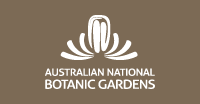1680 TASMANIAN GOVERNMENT GAZETTE. [DECEMBER 5, 1962]
DESCRIPTION
THE TASMANIAN BLUE GUM
The Tasmanian Blue Gum, Eucalyptus globulus Labill., was collected from the south-east coast of Tasmania in 1792-93 by the French naturalist J. J. H. de Labillardiere and was described and illustrated by him in 1799. Labillardiere was a member of the expedition which, under the command of Bruny d'Entrecasteaux, sailed to the southern hemisphere in search of the missing explorer J. F. G. de La Perouse.
In favourable situations the Tasmanian Blue Gum grows into a tall tree of height up to about 200 feet. The trunk is smooth and greyish-white in the upper part where the bark peels in long reddish-brown ribbons; at the base the bark is often. persistent, rough and deeply furrowed. The name " Blue Gum " refers to the appearance of the juvenile leaves which are borne in opposite pairs on square stems. These leaves are glaucous (bluish-grey and covered with a waxy bloom), 2½ - 6 inches long, almost oblong but bluntly pointed at the tip and rounded at the base; they are more strongly scented than those of the mature tree and contain large quantities of the essential oils cineole and phellandrene. The leaves of the mature tree are borne alternately on rounded stems, they are green and glossy, shortly-stalked, 6 -14 inches long and usually sickle-shaped.
The flowers, which are larger than those of other Tasmanian eucalypts, usually occur singly in the axils of the leaves. The flower-buds maybe up to three-quarters of an inch in diameter, they are coarsely ribbed, warty and are, as in all eucalypts, closed by an operculum or cap representing the sepals and petals. This cap is finally shed exposing a very large number of white stamens arranged in several rows near the outside. Within the stamens a thick nectar-secreting disk extends partly over the top of the ovary. Flowering occurs fairly regularly each year in early Summer; bees collect both pollen and nectar and a characteristic amber-coloured honey is produced. The large woody fruit is almost flat-topped and opens by 4 -5 valves through which numerous small seeds are shed.
The Tasmanian Blue Gum is widespread and locally abundant in southern and eastern Tasmania and in the middle reaches of the River Derwent; it attains its maximum size in well-drained soils and in sheltered valleys. The tree occurs, although in restricted areas, near the west and south coasts and also in King and Flinders Islands and in Victoria at Wilson's Promontory and at Cape Otway.
Of all the Australian eucalypts E. globulus is the species which has been most widely introduced overseas. The tree has been established throughout the Mediterranean region and in highlands of the tropics in many parts of Africa and in India; it is widespread in California and in parts of Chile, Argentina and New Zealand. In addition to its ornamental value the Tasmanian Blue Gum is of considerable economic importance in many of these regions and is extensively used for pit props and as a source of fuel and for paper-pulp; oil is also extracted. The seasoned timber is especially valuable for heavy construction work such as wharves, bridges and railway sleepers, being very durable both in the ground and in water.
![An Australian Government Initiative [logo]](/images/austgovt_brown_90px.gif)







